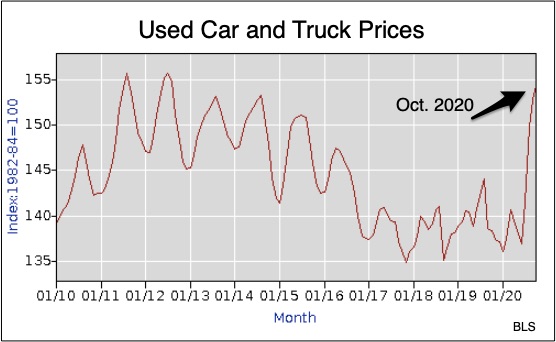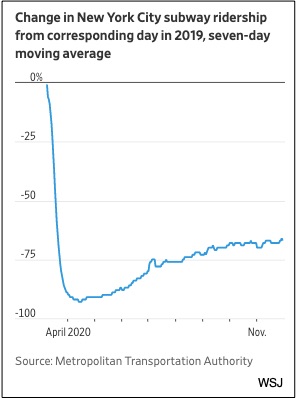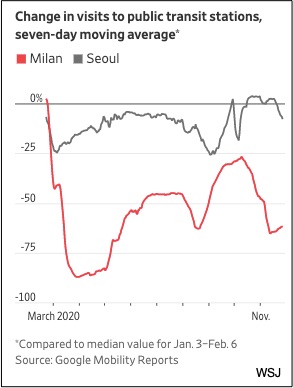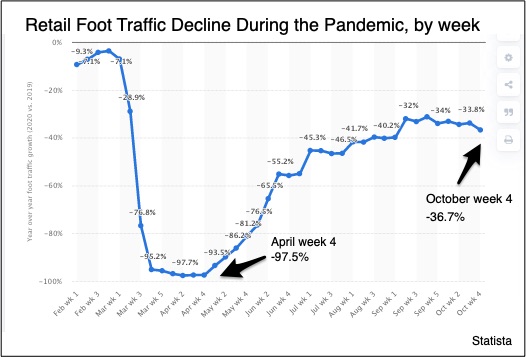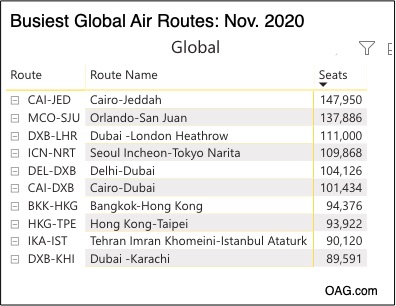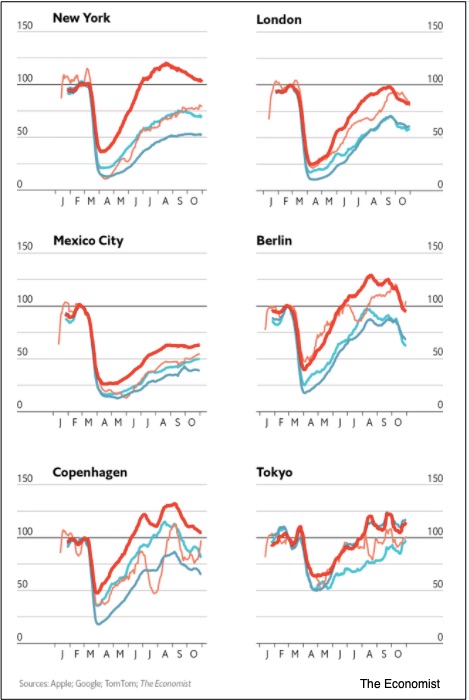The pandemic has shifted how and where we travel.
Let’s take a look.
Six Kinds of Traffic Changes
1. Used Car and Truck Traffic
When we combine cautious consumer spending, fewer new cars in dealer lots, and fear of public transit (and even Uber), we get a spike in used car and truck purchases. And when demand increases, you know the impact on prices:
2. NYC Subway and Bus Traffic
In NYC, predictably, there has been an inverse connection between public transit use and Covid-19 cases:
Updated, the trend is similar:
3. Global Public Transit Traffic
Milan and Seoul, though, had a different public transit response:
4. Foot Traffic
Retail foot traffic declined in three NYC neighborhoods–Flatiron, Chelsea, and Union Square–because of fewer workers, tourists, students, and gym goers. Similarly, for the entire U.S., it plunged, then slightly recovered, and is sliding again:
5. Air Traffic
Asia is where more than half of the world’s busiest air routes began or ended during November. Just two were in Europe, and one, the U.S.:
6. Driving Traffic
Below, globally, we can see parallel ups and downs in traffic congestion:
Our Bottom Line: Transportation Infrastructures
Moving from 18th century roads to 19th century canals and railroads to a 20th century interstate highway system, our transportation infrastructure has changed how we move goods and people.
We can ask if the pandemic will permanently impact 21st century travel.
My sources and more: Today’s journey started with WSJ’s story about the pandemic and public transit. Next, I saw used trucks and cars at CNBC and BLS and then went back to WSJ for foot traffic. The best part of the trip though was winding up at The Economist.


